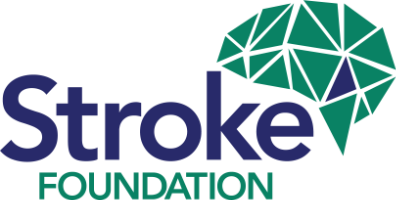What you need to know
- Vision changes affect about one third of survivors of stroke.
- Changes can affect the area you can see and be aware of, and how your eyes move.
- Your vision may improve, but full recovery is less common.
- Vision recovers most in the first few months after the stroke.
Vision changes after stroke
Your vision needs your eyes to gather light, and your brain to process the information.
The occipital lobe at the back of the brain does most of the visual processing. When the occipital lobe is injured, it can affect how you see colour, size and shape.
Information from each eye joins together in the brain. So even when stroke affects one side of the brain, it affects both eyes.
A stroke in the brain stem can affect eye movement control and how well you interpret what you see.
Visual field loss
Your visual field is the entire area you can see when your eyes are fixed in one position. You can lose areas of visual field when stroke damages your brain.
- Homonymous hemianopia is loss of half the visual field in both eyes. It can be on the right or left side.
- Quadrantanopia is loss of a quarter of the visual field.
In the lost visual field, you cannot see objects, colour, light or movement.
Visual field loss can make it hard to read and get around.
Scanning makes the most of your remaining vision and becomes second nature over time. An occupational therapist can teach you scanning.

Visual neglect and agnosia
People with visual neglect are not aware of things on their right or left side. People with visual agnosia have trouble recognising faces and objects.
Visual neglect and agnosia are not problems with seeing. They come from damage to the parts of the brain that interpret vision.
Eye movement
A stroke can damage the nerves and muscles that move your eyes.
- Diplopia is double vision.
- Strabismus is when one eye turns in a different direction to the other eye.
- Nystagmus is rapid, uncontrolled eye movement. The eyes can flicker side to side, up and down, or in circles.
Dry eyes
Problems with the nerves of the eyelid, the facial nerve or the muscles of the eyelid can make it harder to blink or close your eyes. This can lead to dry eyes.
Management and recovery
Many people will get some improvement in their vision. Most recovery comes in the first few months after the stroke. However, full recovery is less common.
Vision changes can affect your safety, independence and mental health. But with the right help, you can keep doing what you enjoy with confidence.
Ophthalmologists, orthoptists and occupational therapists can help you manage your vision changes. Ask your GP to refer you.
Vision Australia and Guide Dogs Australia can also help with therapies and equipment. They can help you learn skills like scanning.
Your treating team might also give you prism lenses, eye patches, eye drops or sunglasses.
Talk to your doctor about driving after your stroke. To find out more, read our Driving after stroke fact sheet.
Get help
StrokeLine’s nursing and allied health professionals can give you information, advice and support.
StrokeLine is a free, confidential and practical service.
Open Monday to Friday, 9am to 5pm Australian Eastern Time. StrokeLine is closed on National and Victorian public holidays.
Call 1800 787 653
Email strokeline@strokefoundation.org.au
Vision Australia
Technology, services and information for anyone experiencing or supporting those with vision loss.
Call 1300 84 74 66
Visit visionaustralia.org
Guide Dogs Australia
Dog services and other supports for any vision level, plus training in skills to live the way you want to.
Call 1800 484 333
Visit guidedogs.com.au
EnableMe
EnableMe can help with your stroke recovery. Get the information you need. Connect with other survivors, families and carers.
enableme.org.au
Download Vision loss after stroke fact sheet (PDF)
For more information visit the EnableMe resource topic on Vision and senses.
